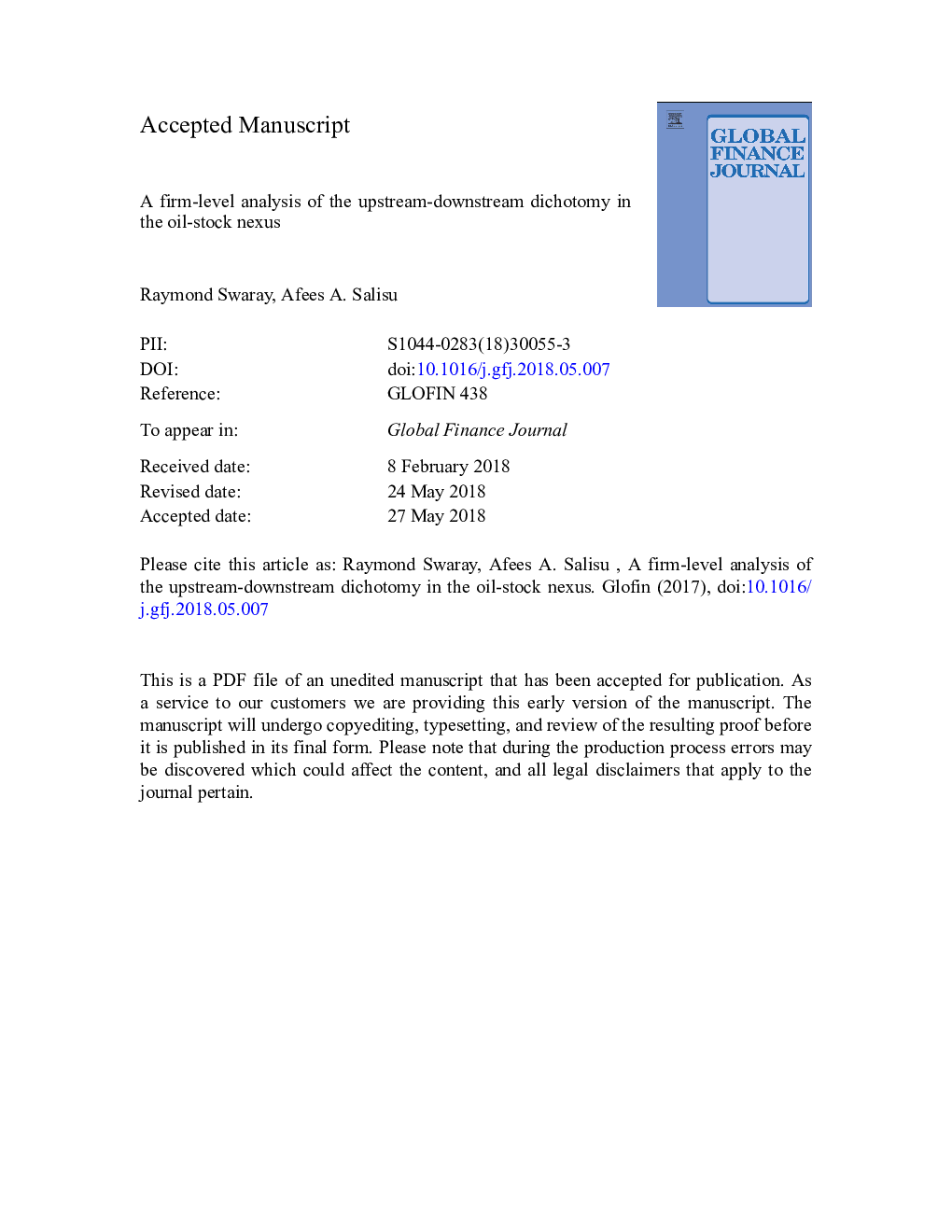| کد مقاله | کد نشریه | سال انتشار | مقاله انگلیسی | نسخه تمام متن |
|---|---|---|---|---|
| 7354149 | 1477150 | 2018 | 44 صفحه PDF | دانلود رایگان |
عنوان انگلیسی مقاله ISI
A firm-level analysis of the upstream-downstream dichotomy in the oil-stock nexus
ترجمه فارسی عنوان
تجزیه و تحلیل سطح شرکت در سطح دیکتومای پایین دست در سهام نشت نفت
دانلود مقاله + سفارش ترجمه
دانلود مقاله ISI انگلیسی
رایگان برای ایرانیان
کلمات کلیدی
موضوعات مرتبط
علوم انسانی و اجتماعی
مدیریت، کسب و کار و حسابداری
کسب و کار و مدیریت بین المللی
چکیده انگلیسی
In this paper, we query whether the stock prices of nonintegrated firms in the upstream and downstream sectors of the global oil supply chain respond symmetrically to changes in oil prices. This inquiry relates to the “homogenous expectation” assumption among investors and fund managers pertaining to the returns and variances of assets of specialized firms operating in upstream and downstream sectors of the supply chain. Motivated by the Arbitrage Pricing Theory, we formulate a Panel Autoregressive Distributed Lag (PARDL) model, which explains the possible macroeconomic factors in the oil-stock nexus as well as any inherent persistence and heterogeneity effects due to large cross-sections and time. In accordance with the Shin, Yu, and Greenwood-Nimmo (2014) approach, a Nonlinear Panel ARDL model is also formulated to test for possible asymmetric responses of the nonintegrated oil firms to positive and negative changes in the oil price. Our findings indicate that the stock prices of upstream and downstream firms move in contrasting directions in response to changes in the benchmark crude oil prices in the long-run. Specifically, we show that the stock prices of upstream sector firms increased in response to an increase in oil prices, while the reverse holds for the stock prices of downstream firms. In the short run, returns on the stock of firms in both sectors increase following an increase in oil prices; however, downstream firms' stock returns decreased in response to negative oil price shocks. The findings further show that both sectors respond differently to episodic changes in market conditions that emanated from the global financial crisis. However, upstream firms show a stronger response to changing market conditions than their downstream counterparts.
ناشر
Database: Elsevier - ScienceDirect (ساینس دایرکت)
Journal: Global Finance Journal - Volume 37, August 2018, Pages 199-218
Journal: Global Finance Journal - Volume 37, August 2018, Pages 199-218
نویسندگان
Raymond Swaray, Afees A. Salisu,
